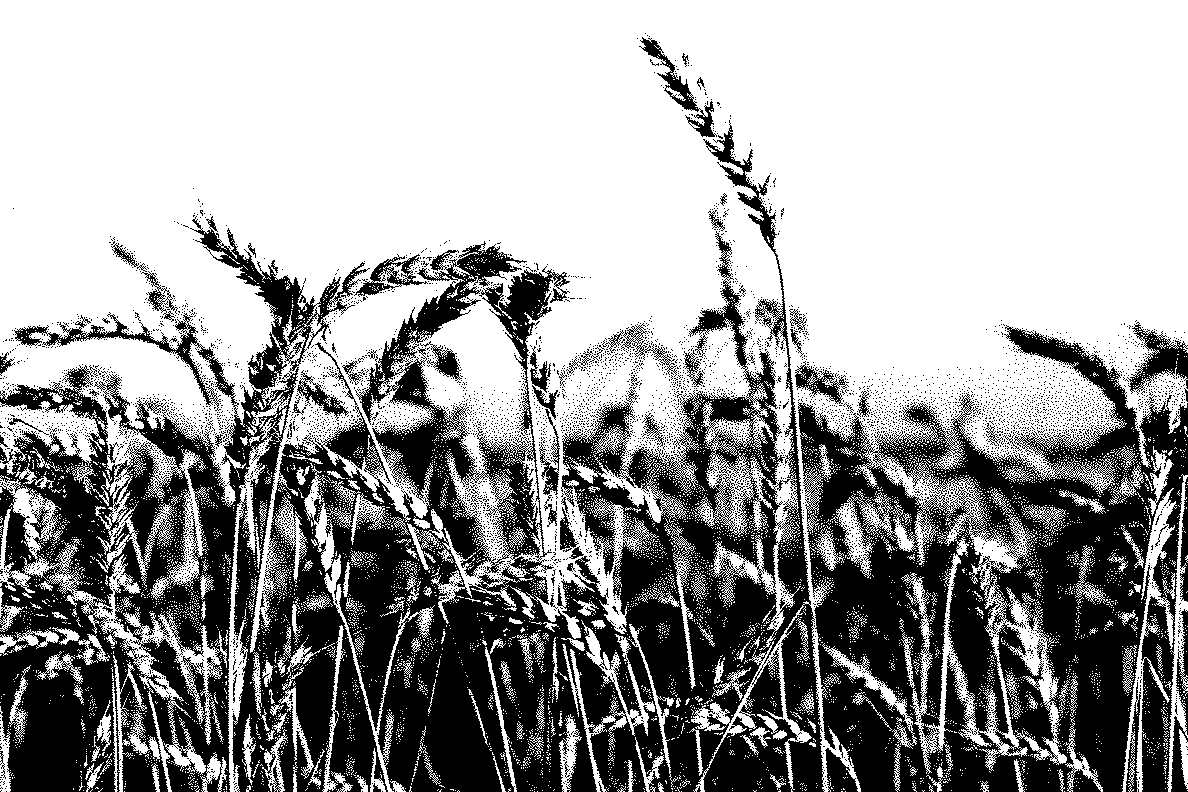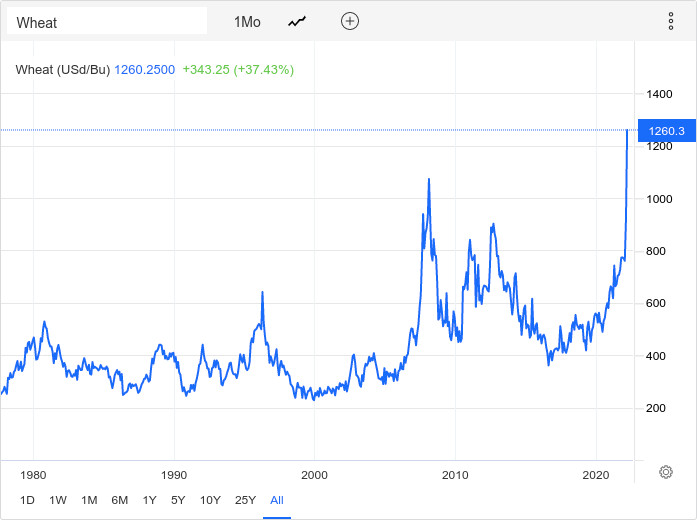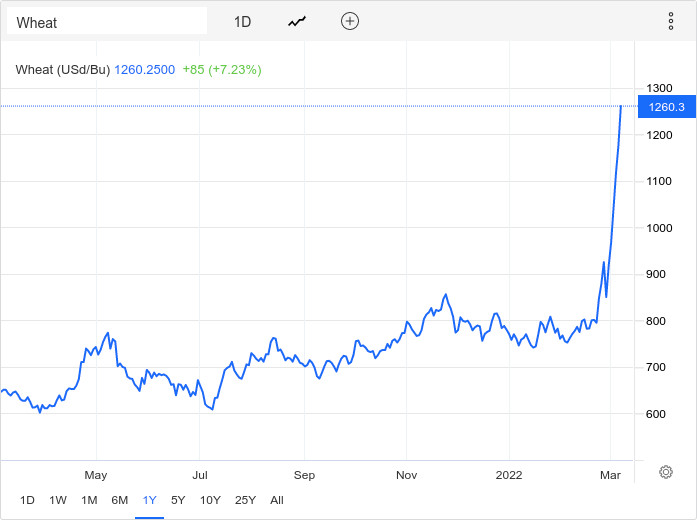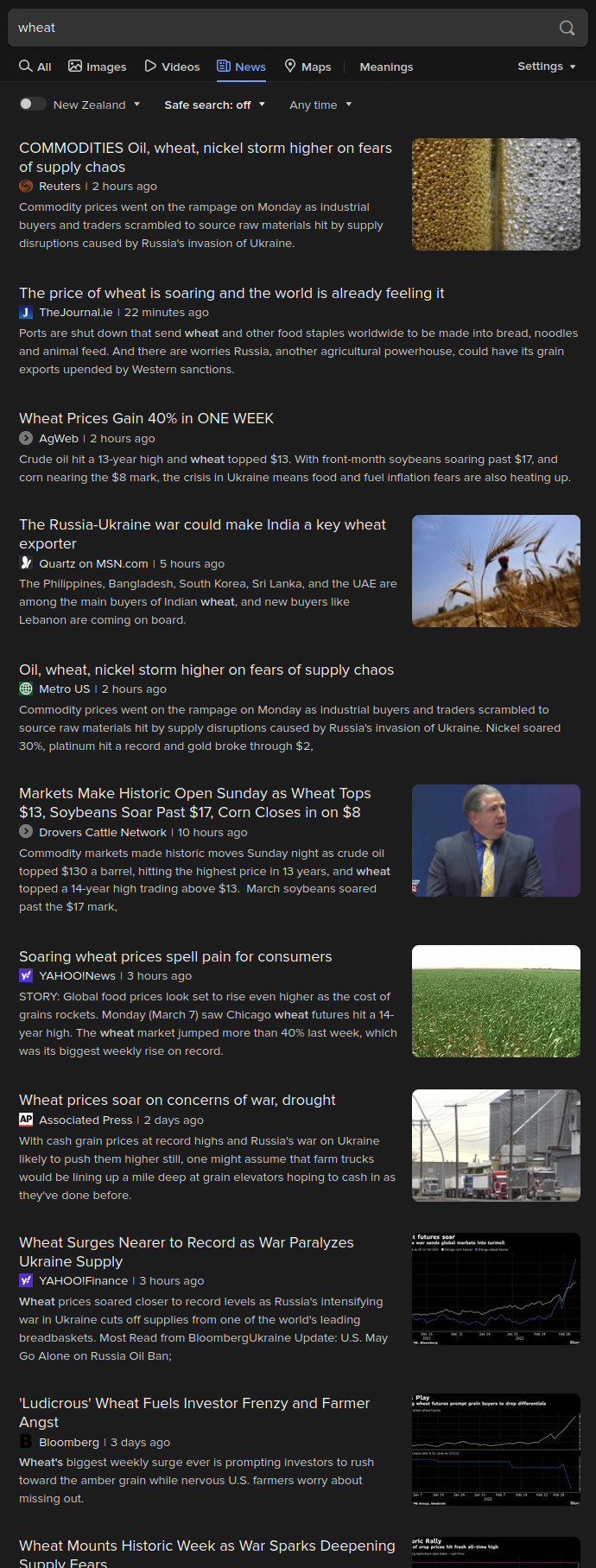 Coffee Space
Coffee Space 

This article will be short-ish and sweet. Do yourself a favour and read it, then the suggestions.
I’m not talking about the invasion of Ukraine by Russia, or the possibility of WWIII on the European continent. If anything, what I will discuss here today is much worse. I don’t suggest this lightly.
When there is a computer chip crisis, people can’t buy smartphones and cars easily. When there is an energy crisis, the lights go out and people can’t drive their cars. When there is a food crisis, all bets are off. Pretty much every regime change in history of note has been related to some ruling party not being able to feed their people.
This has been on my mind for a while now, but it’s only now that I sat down and thought about it - and I realise the situation is quite dire.

We’ve been warned about increased food prices for quite a while now. The specific problem of wheat came onto my radar in September:
The price of durum wheat was set to rise already back then, meaning Italy would see a pasta shortage as they compete with China and the like.
Food prices in general were already starting to look bad in February. Then Russia invaded Ukraine.
It’s not just people who eat wheat. We’re also talking about cattle - a major source of calories and protein in the world. Meat prices will rise as a result.
In 2020, the top 15 wheat importers (by value) were:
- Egypt: US$2.7 billion (5.7% of total imported wheat)
- Indonesia: $2.6 billion (5.5%)
- Turkey: $2.33 billion (4.9%)
- China: $2.26 billion (4.8%)
- Nigeria: $2.06 billion (4.3%)
- Italy: $2.04 billion (4.3%)
- Algeria: $1.64 billion (3.5%)
- Philippines: $1.57 billion (3.3%)
- Japan: $1.53 billion (3.2%)
- Morocco: $1.42 billion (3.0%)
- Brazil: $1.34 billion (2.8%)
- Bangladesh: $1.28 billion (2.7%)
- South Korea: $970.5 million (2.0%)
- Netherlands: $962.1 million (2.0%)
- Spain: $950.7 million (2.0%)
The one to watch on that list is China. Apparently their import has only increased since then. Their production of crop does not meet their rise in population. In a time when China looks to isolate themselves, they are increasingly more dependent on foreign imports for basic food security.
In a report from February 2022, we see the following points:
But you say: “My Country produces tonnes of wheat, we are a net export!” Sure, but the price will still rise unless the government artificially limits export. Why would they sell 1 unit of wheat locally for $1 when they can get $2 for the same unit of wheat in foreign markets?
It’s not as if banning exports is also not without complications. If another Country is hungry and sees that you are banning exports to keep internal prices low, they might say “what the hell?”. It doesn’t do much for diplomacy - something increasingly important these days.
I can’t remember where I saw originally saw this now, but I was pointed towards a graph on Trading Economics for the price of wheat:

Those two large spikes? One of them is 2008 when we had a global recession. That even larger one on the right is now.

Looking at a more recent breakdown, we can attribute the recent spike mostly to the Russian invasion in Ukraine. Bare in mind that it was already on a concerning upward trend due to shipping concerns, failed yields, energy crisis, fertilizer shortages, etc.
The website explains this as follows:
Chicago wheat futures surged above the $12-per-bushel in early March, a level not seen since March 2008 as the Russian invasion of Ukraine triggered supply disruptions from two of the world’s largest producers. Amid heavy sanctions and restrictive measures from western economies, exports from the Black Sea have nearly halted. Multinational food companies such as Bunge and ADM have closed facilities in the region, while the world’s biggest container ship operator, Maersk/MSC, suspended service to Russian ports. At the same time, the Ukrainian military suspended all commercial operations from Ukrainian ports. Such supply disruptions came on the heels of an already tight market with wheat stocks in major exporting countries at low levels.
That sums the situation up quite well. If you think the threat of nuclear weapons is bad, you wait till Europeans learn that they won’t have anything to eat.
The media is slow on the pick-up, but they are starting to figure it out:

Note that they are still considering this from a stock-market perspective. This will have very real consequences to average people putting food on the table. They’re not yet considering real-world outcomes for the working class, or social stability. People will start to riot if they are hungry, and the police/army will not turn up for work no matter how much you pay them if it means they still go hungry.
Why is nobody reporting this? They are distracted by the escalating conflict in Ukraine. Before that it was the energy crisis. Before that it was the shipping crisis. Before that it was COVID. This is a problem that has snuck on the world.
Your currency is falling day-by-day due to both COVID fallout and Russian sanctions. This is highly unlikely to magically improve. Your pay cheque is worth more today than it will probably be tomorrow.
Your best bet is to invest in something that will be more valuable in the future to hedge against inflation - what better than food? You may not use that gaming computer 1 year from now - but I bet that if you’re still alive, you’ll likely still be eating. You will directly benefit from your investment 1.
Food to buy (in likely order of importance, judge by your personal situation and context):
Calories are immediately more important than nutrition, but you will start to suffer malnutrition after quite some time (depending on your current diet). Nutrition is typically something you will only get from fresh foods, so ultimately this is what you’ll be looking to supplement your stored foods with.
Remember, you need to protect your investments. This will involve the safe storage of your investments. Cool and dry storage, ideally away from direct sunlight. Check it occasionally to ensure you don’t get some infestation. This ranges from rodents, to bugs, to bacteria/mold.
This is not a call to panic buy. Prepare responsibly. The entire purpose of this exercise is to avoid panic. I suggest you do not inform people of the food you are storing. Warn them, sure, but informing people you have significant food may make you a target if things get really bad.
If I’m wrong, you’ve done your shopping too far in advance. You are very unlikely to lose money in any case - even if food gets cheaper, you’ve already saved money by bulk-buying it.